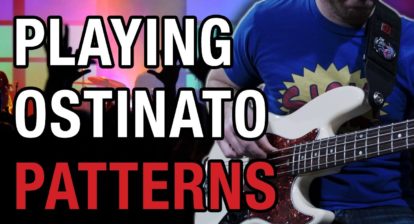Hi Elim,
Good question! As a Music Director, especially at a church, one of our most common jobs is to ensure a smooth transition from one song to the next. This could mean many things, depending on what’s appropriate for your given scenario. For instance, at my church if I were to play a bunch of gospel changes from one key and working up into the next one, that would come across as inappropriate – not because I don’t like gospel music or because I think this technique is lame, but because we don’t do that style of music at my church. It would be out of place.
Since there’s so many options and possibilities that are context dependent, here’s some broad strokes to give you some ideas that you can apply to your situation, church, band or whatever.
- I’d say the most important thing is to have an MD Mic; this is a microphone that you will use which only the band can hear. This of course assumes that each member of the ensemble is wearing in-ear monitors, otherwise there’s no way to accomplish the “band only” mic (your audience will hear it too, obviously). This MD Mic makes it easy for you to call out changes, correct errors, prevent train wrecks, anticipate trash-can endings or even count off songs (so that the drummer doesn’t have to give you four hits on the hi-hat).
- I like to chat with anyone (besides the band) who is going to join us on stage and speak, sing, announce, etc. Usually the band is supposed to play under this person’s monologue, but I like to navigate this for a smooth, seamless transition by asking this person how long they’ll be speaking and what sentence they’ll be wrapping up with. This ensures that I don’t bring the band in too soon or too late, and it also makes this speaker realize that he/she needs to know what he/she will be saying (you’d be amazed how many times they say “Oh I was just gonna roll with it, but ya, you’re right, I should plan it out a little more, huh?”). When I hear the wrap up phrase I can dive in without worrying about cutting them off or lingering too long after they’re done.
- Silence is ok. It really is! Sometimes we spend so much time concerning ourselves with getting the songs to mesh correctly, keys that are related so that we can end one song and start the other at the same time… It’s just not always necessary. You can finish a song, let the cadence decay, wait for the applause to die away, take a breath of silence and then begin the next piece. Sometimes it’s very refreshing, as long as everyone isn’t looking back and forth at each other with deer-in-the-headlight-stares, waiting for the song to start.
Again, these are just some broad ideas that can work in any genre or playing scenario, church or otherwise. If you MD as well, what are some of your techniques? Let me know in the comments below!












